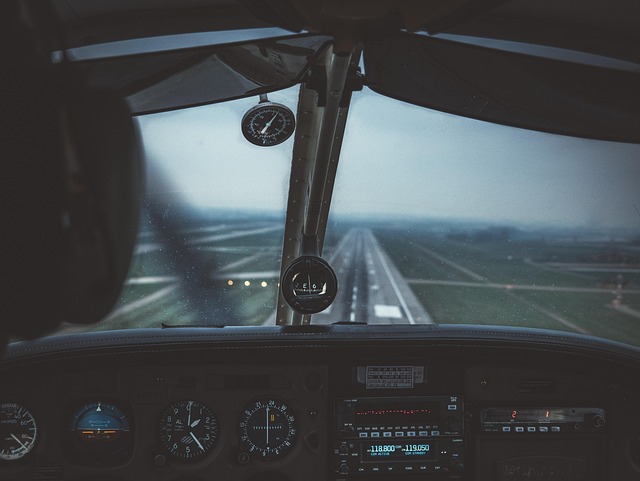Pilot Training in the United States — Clear Steps to Start Your Aviation Career
Pilot training in the United States combines structured classroom instruction with extensive flight experience to prepare students for a professional aviation career. This guide introduces key program types—from private pilot licenses to advanced commercial and airline certifications—while explaining eligibility requirements, medical evaluations, and essential safety standards.

What types of pilot training programs are available in the US?
The United States offers a diverse range of pilot training programs to suit different career goals and personal circumstances. The most common types include:
-
Private Pilot License (PPL): This is the starting point for most aspiring pilots. It allows you to fly single-engine aircraft for personal use and is a prerequisite for more advanced licenses.
-
Commercial Pilot License (CPL): This license enables you to fly for compensation or hire. It’s the next step after obtaining a PPL and requires additional training and flight hours.
-
Airline Transport Pilot License (ATPL): The highest level of aircraft pilot certificate, required for captains of large commercial airlines.
-
Flight Instructor Certificate: Allows pilots to teach others and is often pursued to build flight hours while gaining valuable experience.
-
Multi-Engine Rating: An additional qualification that permits pilots to fly aircraft with more than one engine.
-
Instrument Rating: This qualification enables pilots to fly in conditions with reduced visibility, relying on instrument readings rather than visual references.
Each of these programs has specific requirements set by the Federal Aviation Administration (FAA) and typically involves a combination of ground school instruction and practical flight training.
How are flight hours and simulator practice structured in training?
Flight hours and simulator practice are crucial components of pilot training in the United States. The structure typically includes:
-
Ground School: Classroom or online instruction covering aeronautical knowledge, regulations, and flight theory.
-
Flight Training: Hands-on experience in actual aircraft, starting with basic maneuvers and progressing to more complex operations.
-
Simulator Training: Practice in flight simulators, which provide a safe environment to experience various scenarios and emergency procedures.
-
Solo Flights: Once deemed ready by an instructor, students begin flying solo to build confidence and independence.
-
Cross-Country Flights: Longer flights between different airports to develop navigation and planning skills.
The number of required flight hours varies depending on the license or rating. For example, a Private Pilot License requires a minimum of 40 hours of flight time, while a Commercial Pilot License demands at least 250 hours. Airline Transport Pilot License candidates must accumulate a minimum of 1,500 hours of total flight time.
Simulator practice is increasingly important in modern pilot training. It allows for cost-effective training in a variety of weather conditions and emergency scenarios that would be impractical or dangerous to replicate in a real aircraft.
What continuing education and advanced certifications are available for pilots?
Continuing education and advanced certifications are essential for pilots to enhance their skills, maintain their licenses, and advance their careers. Some options include:
-
Type Ratings: Certifications for specific aircraft models, often required for larger or more complex aircraft.
-
Crew Resource Management (CRM) Training: Focuses on teamwork, communication, and decision-making skills in a multi-crew environment.
-
Safety Management Systems (SMS) Training: Covers systematic approaches to managing safety risks in aviation operations.
-
Advanced Instrument Procedures Training: Enhances skills for flying in challenging weather conditions and complex airspace.
-
Upset Prevention and Recovery Training (UPRT): Teaches pilots how to handle unusual flight attitudes and prevent loss of control incidents.
-
Human Factors Training: Addresses the psychological and physiological aspects of flying and their impact on safety.
-
Aviation Security Training: Covers protocols and procedures for ensuring the security of aircraft and passengers.
Pilots are also required to undergo regular proficiency checks and medical examinations to maintain their licenses. Many airlines and aviation organizations offer in-house training programs for their pilots to stay current with the latest industry standards and technologies.
| Training Program | Provider | Key Features |
|---|---|---|
| Private Pilot License | Embry-Riddle Aeronautical University | Comprehensive ground and flight training, state-of-the-art simulators |
| Commercial Pilot License | ATP Flight School | Accelerated program, airline-oriented training, multiple locations |
| Airline Transport Pilot | FlightSafety International | Advanced simulators, type-specific training, experienced instructors |
| Flight Instructor Certificate | American Flyers | Structured curriculum, mentorship program, job placement assistance |
In conclusion, pilot training in the United States offers a structured path to an aviation career, with various programs catering to different levels of expertise and career goals. From initial flight training to advanced certifications, aspiring pilots have access to comprehensive education and practical experience. The journey requires dedication, continuous learning, and a commitment to safety, but for those passionate about aviation, it can lead to a rewarding and exciting career in the skies.




